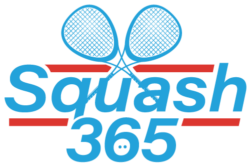Racket sports, such as tennis, badminton, and squash are popular and enjoyable activities for many people. However, they also involve a lot of arm movement that stresses your joints and muscles. Common causes of broken arms are sports injuries, falls and trauma caused by a car or bicycle accident. For example, a bicyclist who suffered a collision may use their arms as a first line of defense and can suffer from long term complications such as osteoarthritis, infections and stiffness. If you have suffered a broken arm, you may wonder how long it will take to resume your favorite racket sport and what precautions you should take to prevent further injury. Read on to learn more.
The first thing to consider is the severity and location of your fracture. A broken arm can affect the humerus (upper arm bone), the radius or ulna (forearm bones), or the wrist. Depending on the type and extent of the fracture, you may need a cast, a sling, or surgery to fix the bone. It’s important to understand that the healing time can vary from six to twelve weeks. In some cases, it can take even longer.
During the healing process, you must follow your doctor’s advice and avoid any activities that could cause pain or damage to your arm. Of course, you can and should do some gentle exercises to maintain your range of motion and prevent stiffness in your shoulder, elbow, and wrist. Your doctor or physiotherapist can recommend some suitable exercises for you.
Once your fracture has healed and your cast or sling has been removed by your doctor, you can start thinking about returning to your racket sport. However, be careful not to rush into it, as your arm will still be weak and vulnerable to re-injury. Increase the intensity and duration of your practice sessions gradually. Pay attention to any signs of discomfort or swelling in your arm during or after exercise.
Some tips to help you return to your racket sport safely and effectively are:
- Choose a light and flexible racket that does not put too much strain on your arm. You may need to adjust your grip size or use a different type of string to reduce the impact and vibration of the ball.
- Warm up properly before playing. Do various dynamic stretches and light cardio exercises to prepare your muscles and joints for the activity. You can also use a resistance band or a lighter weight to strengthen your arm muscles and improve your coordination.
- Start with a few easy drills and rallies, and avoid hitting the ball too hard or fast. Focus on your technique and the accuracy of your swings, rather than your power and speed. You can also play with a softer or larger ball, or use a smaller court, to reduce the difficulty and intensity of the game.
- Take frequent breaks and rest your arm. Apply ice or a cold compress to your arm after playing to reduce inflammation and pain. You can also use a compression sleeve or a brace to support your arm and prevent excessive movement.
- Listen to your body and stop playing if you feel any pain or discomfort in your arm. Do not ignore or push through the pain, as it could indicate a problem or a recurrence of the fracture. Seek medical attention if the pain persists or worsens.
- Consult your doctor or physiotherapist regularly and follow their guidance on effectively progressing your training and recovery. They can assess your condition and advise you on the best strategy to return to your sport without risking further injury or complications.
In conclusion, returning to racket sports after a broken arm is possible, but it requires patience, caution, and professional advice. By following the tips in this article, you can enjoy your favorite sport again while protecting your arm and your health.
